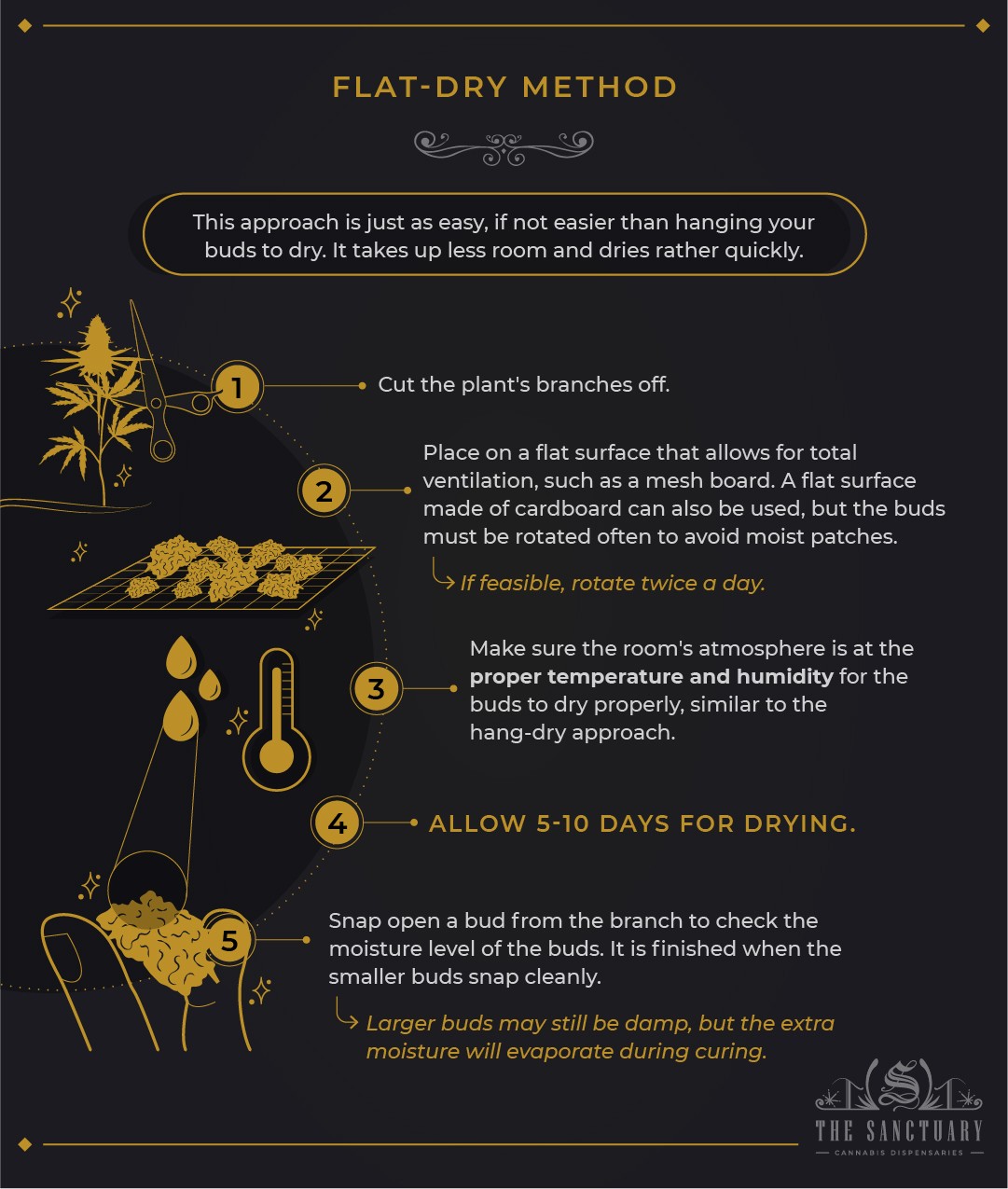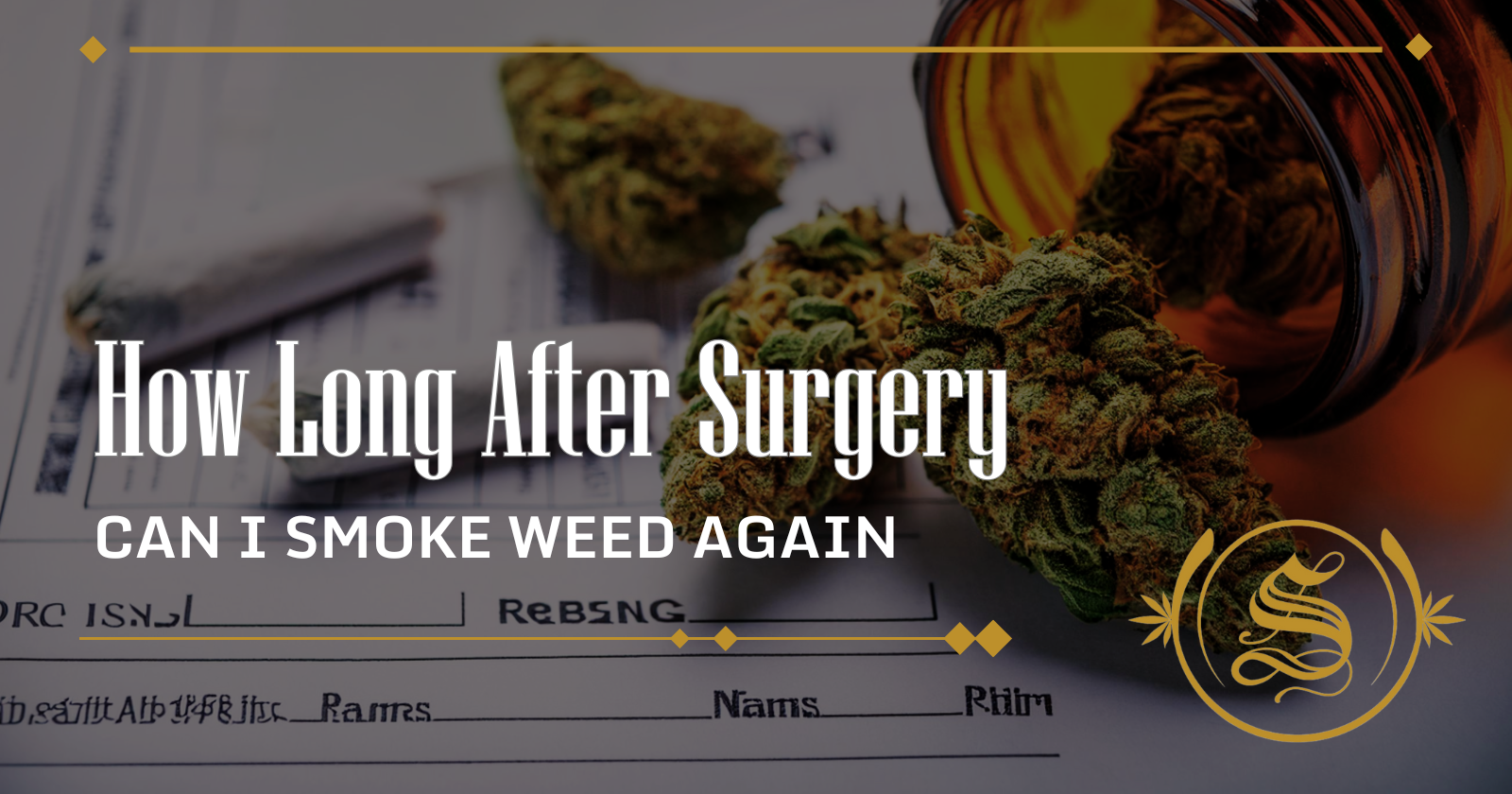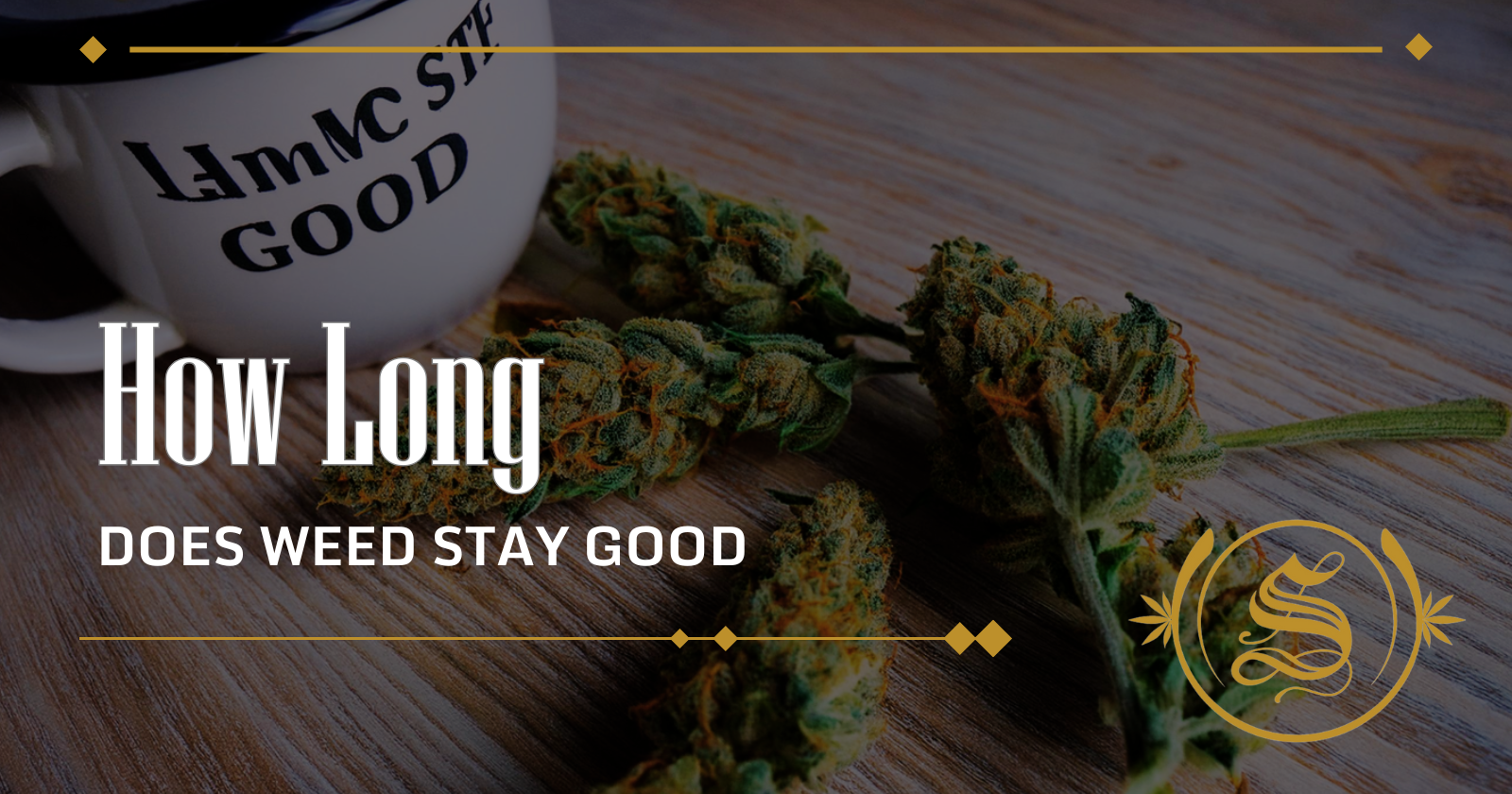Iftikhar Alam
Author
Reviewed by Cannabis Experts
Published on: January 27, 2022 | Updated on: September 10, 2024
While harvesting may appear to be the final phase in the growing process, your bud still requires more attention to reach optimal strength, taste, and smoothness. Before you can utilize your crop, you must trim, dry, and cure it. Trimming and drying are important parts of cannabis processing.
Cannabis flower may be dried in a variety of ways. From complicated procedures such as freeze-drying to more simplified ones like drying the buds on a table outside. The drying process begins as soon as the cannabis plant is cut down.
On an important note, patience is required throughout the drying process since it must be done slowly. There are also ways to rapidly dry buds but this should be a last resort scenario.
Why should I dry my weed?
The drying and curing procedure is credited as the secret formula by many skilled growers who produce high-potency cannabis. Even with superb genetics and appropriate cultivation, the difference between average and award-winning buds is typically determined by drying and curing.
Curing weed allows it to be preserved for longer periods, up to two years under the right storage conditions. Excess moisture in your buds during harvest gives the ideal habitat for mold to flourish. Drying your buds removes excess moisture, resulting in a smoother smoke and a lower risk of moldy cannabis, as well as extending the life of your stored bud.
The terpene content of your flower is also preserved by being patient when drying. Terpenes, the taste, and fragrance chemicals in cannabis are delicate and deteriorate at temperatures as low as 70 degrees Fahrenheit (21 Celsius).
Rather than drying your buds in an oven or microwave, carefully drying your buds maintains the terpenes and produces the finest fragrance and flavor possible. The potency of your cannabis is also enhanced by drying properly. THC progressively degrades into cannabinol (CBN), a non-psychoactive cannabinoid, when exposed to light and air.
How long does it take to dry cannabis?
The time it takes to properly dry weed is between 2 and 7 days. If you trim your buds before leaving them out to dry (wet trimming), the process takes less time since the majority of the plant material is removed early and there is less plant to dry.
When dry trimming cannabis, you will want to make sure each branch has enough room without sitting on top of each other. It is always a good idea to at least trim the large fan leaves to take up less space when drying. These fan leaves are often easy enough to trim wet without worrying about creating a sticky mess.
Check your drying buds or branches after two days by bending a branch or stem; if the stem snaps, the buds are entirely dry. Leave them alone if they do not snap the next day.
What is weed trimming?
Trimming cannabis is the act of removing the fan and sugar leaves from your weed branches, which is an important element of the post-harvest labor involved in getting a cannabis crop ready for consumption.
In many circumstances, the difference between an eighth that sells for $20 and one that sells for $60, comes down to how well it was trimmed. Seasoned cannasseurs know that well-trimmed weed looks much more attractive than nugs that still have sugar leaves on it.
Trimming, most importantly, lowers the likelihood of mold growing on your freshly harvested buds before it has had a chance to dry. These leaves may retain moisture, making mold growth more likely to destroy your precious work.
Wet trim vs. Dry trim
You may already be aware of the distinction between wet and dry trimming, or at the very least be able to deduce it from the titles. If you are unfamiliar with the subject, the only difference between the two ways is when you trim your weed.
A wet trimming technique is when you trim the fan and sugar leaves from your branches before you leave them out to dry, immediately after the harvest. Dry trimming, on the other hand, is exactly what it sounds like. You will harvest your plant, trim the large fan leaves then let it dry until the moisture content is satisfactory. After it is dried enough, you will go back and trim off the sugar leaves.
The controversy about wet vs. dry trimming is simply an illustration of how different individuals prefer various things. It all boils down to a personal choice to some extent.
Benefits of wet trimming
Many growers prefer wet trimming. The major reason they choose this approach is that it dries faster and takes up less space. Some growers also say that buds can “puff up,” making them look bigger and more appealing. If you are a commercial grower, this is an excellent incentive to cut wet since it improves bag attractiveness.
Problems with wet trimming
Trimming when wet has some drawbacks. It is a lot messier since the wet trichomes will accumulate on your scissors, reducing their effectiveness. Wet trimming takes longer in general because the leaves do not trim off as easily. You should expect to take some extra time to regularly clean your scissors unless you have backups.
Benefits of dry trimming
Dry trimming offers its own set of advantages. When your plants are matured, you may chop them down and start drying them right away. This entails a lengthier drying process, which preserves terpenes and makes for a more pleasurable final product.
Because sticky trichomes solidify while drying, your trimming tools will require less cleaning and the whole process goes much more smoothly.
Problems with dry trimming
The biggest disadvantage of dry trimming is that you must be more delicate, otherwise, you risk losing some trichomes throughout the procedure. This should not be an issue if you handle the buds gently while you trim them. Because the trichomes on your flower have dried out, they are much more fragile and brittle.
The second major problem is that your weed branches will take longer to dry. This is because there is more plant material attached to them. This is not always a problem for every cultivator yet something to consider.
Flat-dry method
Growers do not always have the space to put a bunch of strings all over the place for hang-drying weed. Use the flat-dry approach if this is the case. It is just as easy, if not easier than hanging your buds to dry. The flat drying method takes up less room and dries rather quickly.

How to flat-dry your cannabis:
- Cut the plant’s branches off.
- Place on a flat surface, ideally one that allows for total ventilation, such as a mesh board. A flat surface made of cardboard can also be used, but the buds must be rotated often to avoid moist patches. (If feasible, rotate twice a day.)
- Make sure the room’s atmosphere is at the proper temperature and humidity for the buds to dry properly, similar to the hang-dry approach.
- Allow 5-10 days for drying.
- Snap open a bud from the branch to check the moisture level of the buds. It is finished when the smaller buds snap cleanly. Larger buds may still be damp, but the extra moisture will evaporate during curing.
Drying racks
This is similar to the flat-drying method but utilizes a specially designed mesh netting product for weed nugs. When using drying racks, it is important to keep track of how far apart the buds are. Mold is more likely to form when buds are crowded together while still damp.
Drying racks do not require as much space as hang-drying and you can skip the hassle of putting up strings all over your ceiling.
How to use drying racks for your cannabis:
- Cut the plants’ buds and lay them on the mesh.
- Rotate the buds daily to ensure equal drying.
- To enable the buds to dry slowly without losing their strength, keep an eye on the room temperature and humidity.
- Install a fan to help with ventilation, but keep it away from the buds. This might result in rapid drying.
- Continue drying for 5-10 days.
- Snap open a bud to see if it opens cleanly. This will indicate whether it is finished or not. Larger buds should still be a little damp but also able to be split.
The content provided on this blog is for informational purposes only and does not constitute medical, legal, or professional advice. Cannabis use is subject to local laws and regulations, which vary widely by jurisdiction. Always consult with a healthcare professional before starting any new treatment or altering an existing treatment regimen. The authors and publishers of this blog are not responsible for any actions taken based on the information provided herein. Use cannabis responsibly and in accordance with applicable laws. This blog is intended for adults aged 21 and over. The Sanctuary Dispensaries D186, D187.








